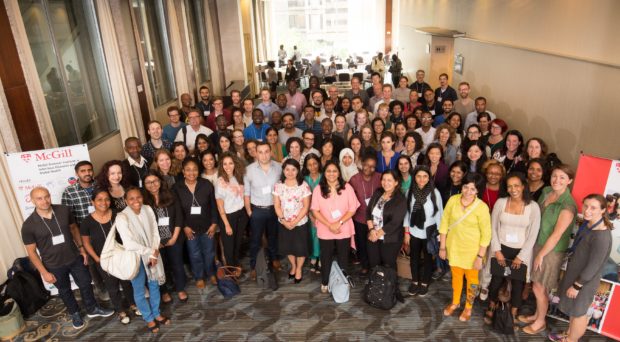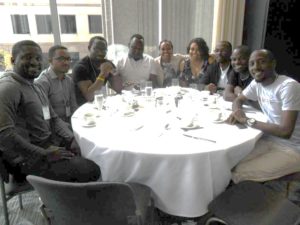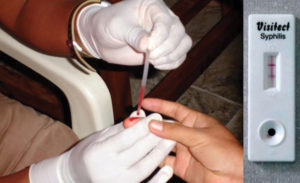

I have just returned to the Liverpool School of Tropical Medicine, having attended the University of McGill’s global health diagnostics course in Montreal, Canada. As part of the McGill summer institute of Infectious disease and Global Health, the course ran from the 12th– 18th June and was attended by participants from over 20 countries. The impressive crowd of attendees included a range of medical professionals, academics, policy makers, NGO representatives, industrial product developers and even ex-TB patients. This variety of backgrounds was reflected in the course content and was largely why this course appealed so much to me.
As a 2nd year PhD student working on molecular diagnostics for malaria, I wanted to look at the bigger picture and broaden my understanding of global health diagnostics. Specifically, I wanted to understand which of the many diagnostics needs should be prioritized and what barriers we can – as early product developers – anticipate in reaching the intended user.

The course dove straight into tackling the first issue- how we start to prioritize diagnostic needs. Professor Cedric Yansouni (McGill) highlighted the difficulties in prioritizing needs purely by number of DALYs, suggesting more regional DALY impact might be more appropriate. He proposed prioritization by magnitude of impact on either/both individual management and at a community level. This was particularly topical, as the 20th WHO Model List of Essential Medicines (EML) was published a week prior to the course (June 6th). Included in this was a “recommendation that the WHO develop an Essential Diagnostics List (EDL). The WHO has begun to lay the ground for the preparation of the list, which will become an important contribution to Universal Health Coverage (UHC).” Dr Francis Moussy (Diagnostics leader, WHO) highlighted the importance of creating such a list to assist the EML’s mission, as well as to help minimize drug resistance against such listed medicines. The first phase of the EDL will be discussed in a September meeting later this year.
The course was almost entirely lead by panel discussions comprising an impressive array of expertise. It was very interesting to realize the range of diagnostic “wish-lists” of the different companies and sectors, especially with respect to the upcoming EDL. The range of panels also provided a comprehensive briefing into the barriers that product developers face in reach their target markets. A resounding barrier to market was the lack of cohesion between different regulatory bodies e.g in quality control protocols, as well as the expense in seeking approval from multiple regulatory boards. Proposals for the development of a diagnostics consortium were discussed to try to aid standardization of regulatory guidelines. The risk of no return from investors was also emphasized- with little understanding of the sustainability of diagnostics markets, particularly in resource-limited settings, this was a concern. This was later addressed in the course by Dr Jim Gallarda (Bill and Melinda Gates Foundation), who put forward several business models that investors could take to minimize these risks.

Twelve different companies including: Alere, Roche, FIND, MSF, PATH and VelaDiagnostics took part in an exciting, rapid-fire Tech pitch with a 5 minute presentation each. It seems ‘connected diagnostics’ and mHealth (mobile health) are increasingly necessary in the global health field. These pitches brought hope that some wishes might be met/barriers could be overcome, whether through innovative solutions in implementing existing tools or through the development of new technologies. Tim Amukele (John Hopkins) presented his exciting work using drones for the complicated task of delivering samples in resource-limited settings, perfectly demonstrating how we have to keep up with technology.
Adding a personal touch, and speaking about their experiences in India, were two ex-TB patients who are now empowered advocates for better diagnostics for TB: Deepti Chavan, who lost a lung due to delayed diagnosis of XMDR-TB and Nandita Venky, who lost her hearing after multiple rounds of incorrect antibiotic use. Their powerful stories reminded us of why diagnostics need to be taken more seriously and drop the title of the “ugly step-sister of medicine”. Professor Madhukar Pai (McGill) described the current initiatives for better TB diagnostics, but emphasized that the importance of TB was still being undermined and that “if India was serious about TB, we would not have such a staggering disease burden”.
The diagnostic landscapes, needs and priorities of numerous diseases including: general febrile illness, HIV, malaria, NTDs, arboviruses, enteric diseases and the erupting problem of AMR were impressively covered given the relatively short duration of the course. I fully endorse this course to anyone working in any aspect of the long and winding diagnostics pipeline. It was an invaluable experience and a great opportunity to meet leading experts, practicing medical professionals and policy makers in this field.

Comments